Spadefoot Toad Tadpoles Metamorphosing
Another visit to my Spadefoot Toad pool in the Utah Desert
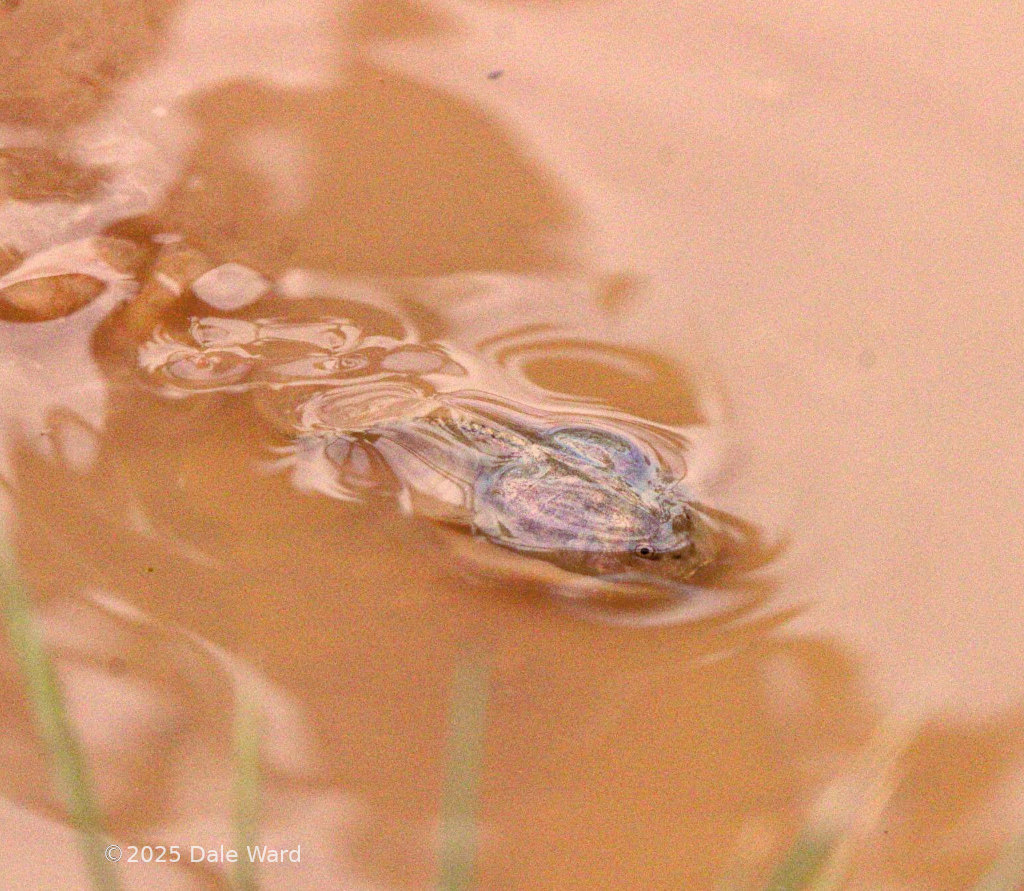 Mexican Spadefoot tadpole, swimming fast enough to create a wake in the water. You can just barely see the toes on its right hind limb.
Mexican Spadefoot tadpole, swimming fast enough to create a wake in the water. You can just barely see the toes on its right hind limb.
Back in late August of this year, I made another trip out to one of my Southeastern Utah Spadefoot pools to see how they were doing.
The pool had shrunk by about one-third, I’d guess.
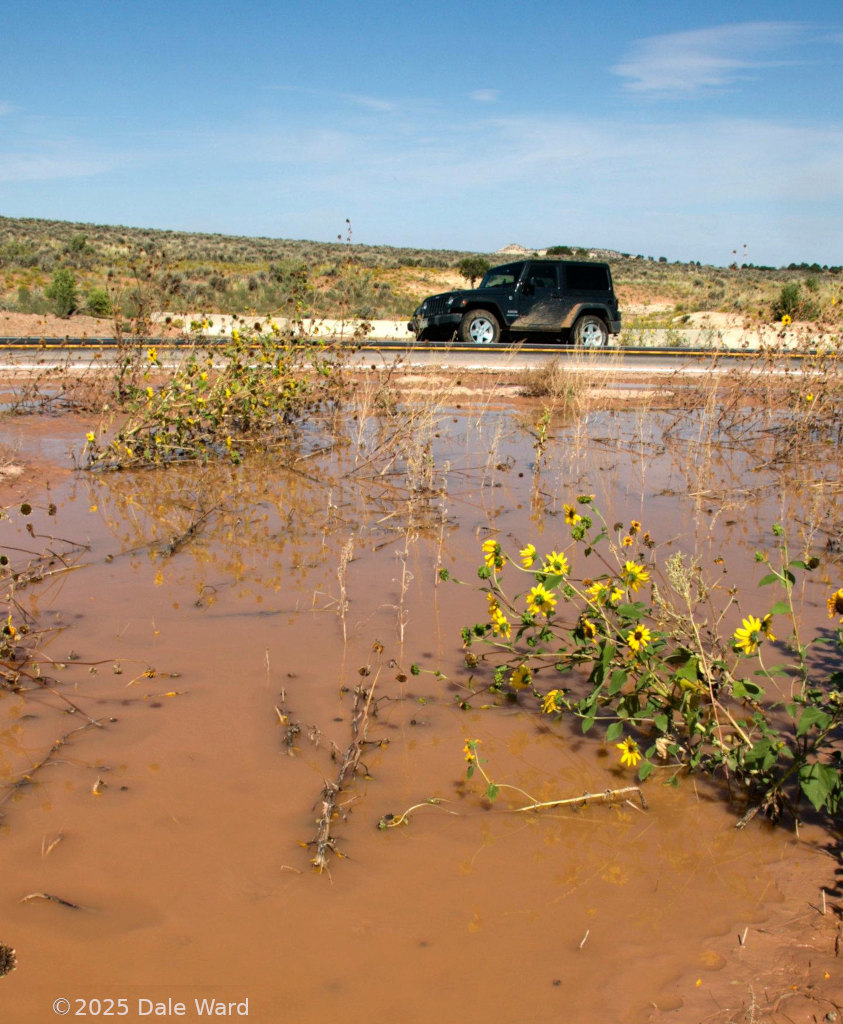 Faithful Jeep next to the Spadefoot Tadpole pool. Note that there are Sunflowers growing out of the middle of the pool. This spot was dry ground until the Monsoons arrived.
Faithful Jeep next to the Spadefoot Tadpole pool. Note that there are Sunflowers growing out of the middle of the pool. This spot was dry ground until the Monsoons arrived.
I was concerned that the pool might have dried up, or that the tadpoles had all metamorposed. I was quite happy to see that the tadpoles were still present.
The water was shallow, only a couple of inches at its deepest. The tadpoles would stir up the mud as they swam, leaving beautifully swirling muddy contrails in the water behind them.
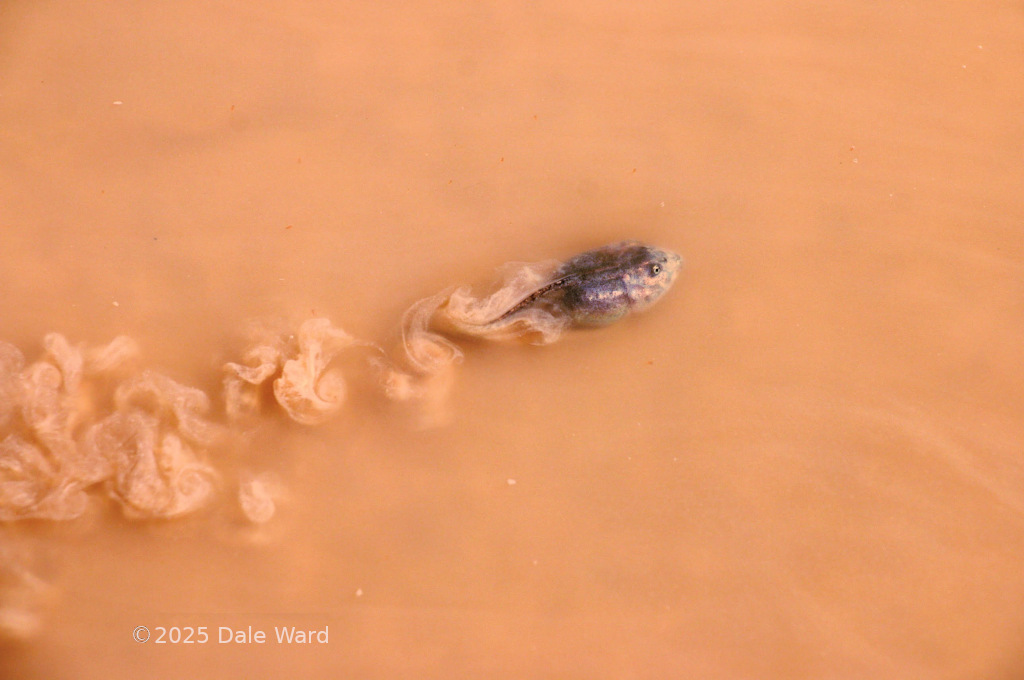 Mexican Spadefoot tadpole swimming in shallow water. The turbulence from its tail leaves beautiful swirls behind it.
Mexican Spadefoot tadpole swimming in shallow water. The turbulence from its tail leaves beautiful swirls behind it.
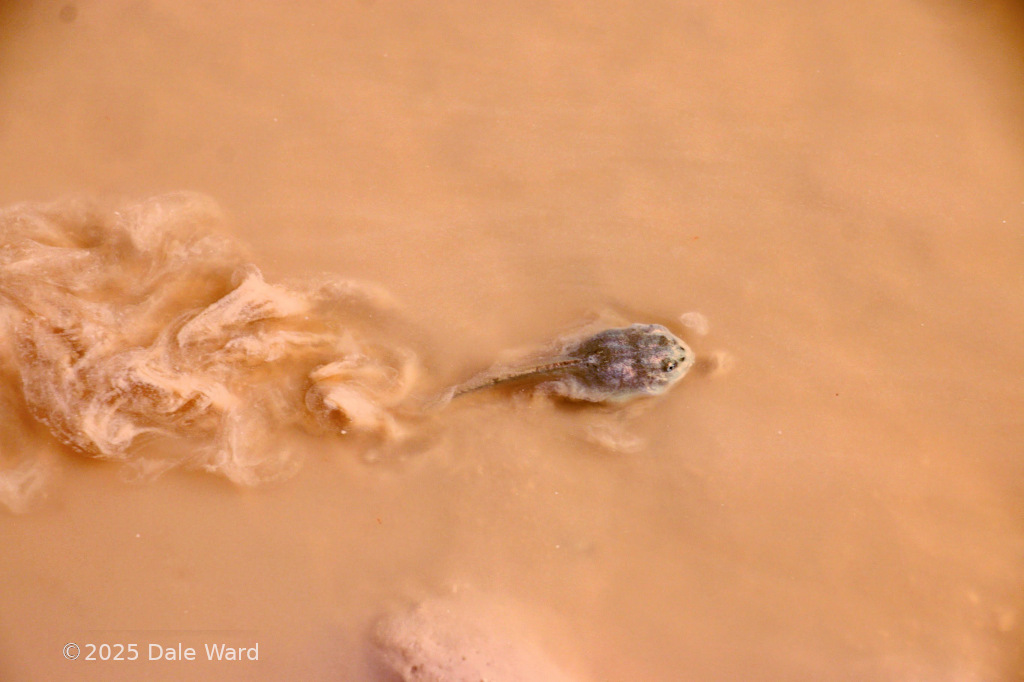 Mexican Spadefoot Toad tadpole rest in shallow water. The muddy swirls behind the tadpole were left by its tail as it was swimming. The puffs of mud in front of its face and around its body are from the tadpole settling into the mud of the pool bottom.
Mexican Spadefoot Toad tadpole rest in shallow water. The muddy swirls behind the tadpole were left by its tail as it was swimming. The puffs of mud in front of its face and around its body are from the tadpole settling into the mud of the pool bottom.
Many of the tadpoles have their hind legs as this point. I’m not positive about this, but it seemed as though the larger tadpoles were slower to develop their limbs than the smaller tadpoles.
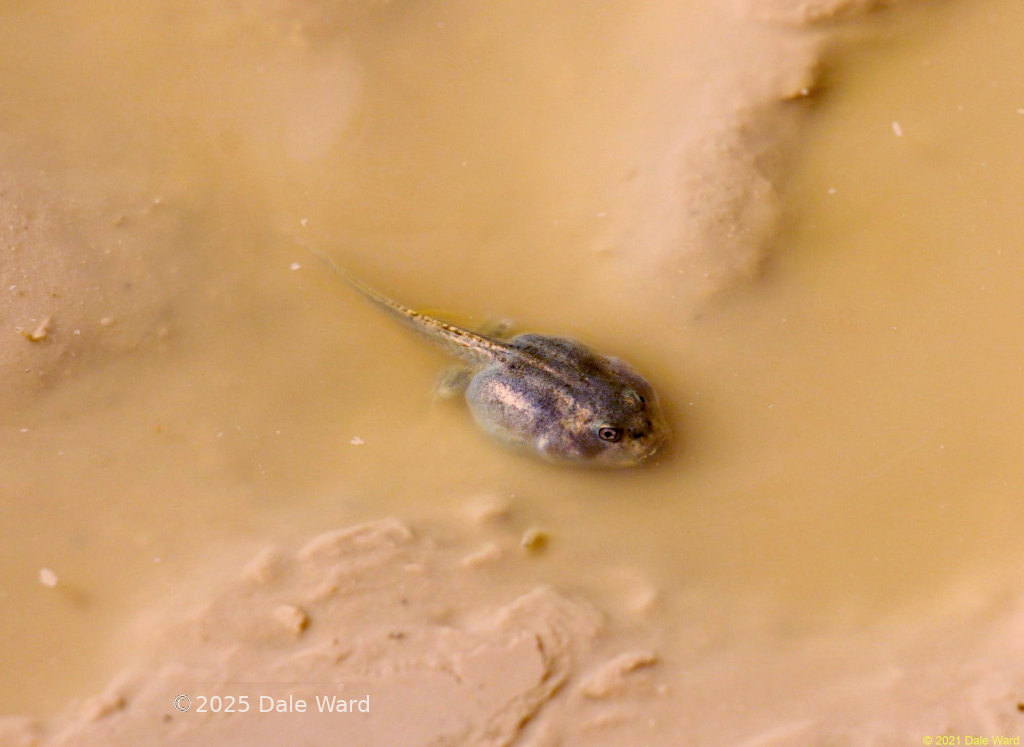 A Mexican Spadefoot tadpole. You can see that it’s just starting to grow its hind legs.
A Mexican Spadefoot tadpole. You can see that it’s just starting to grow its hind legs.
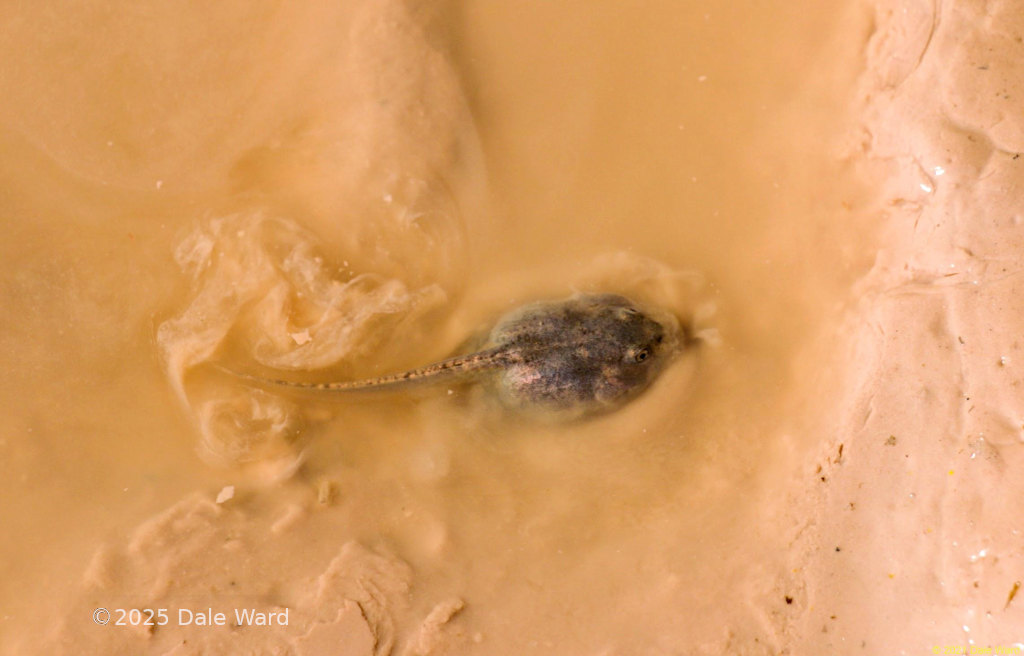 Mexican Spadefoot tadpole in shallow water. They would push themselves into water so shallow that they would be barely submerged.
Mexican Spadefoot tadpole in shallow water. They would push themselves into water so shallow that they would be barely submerged.
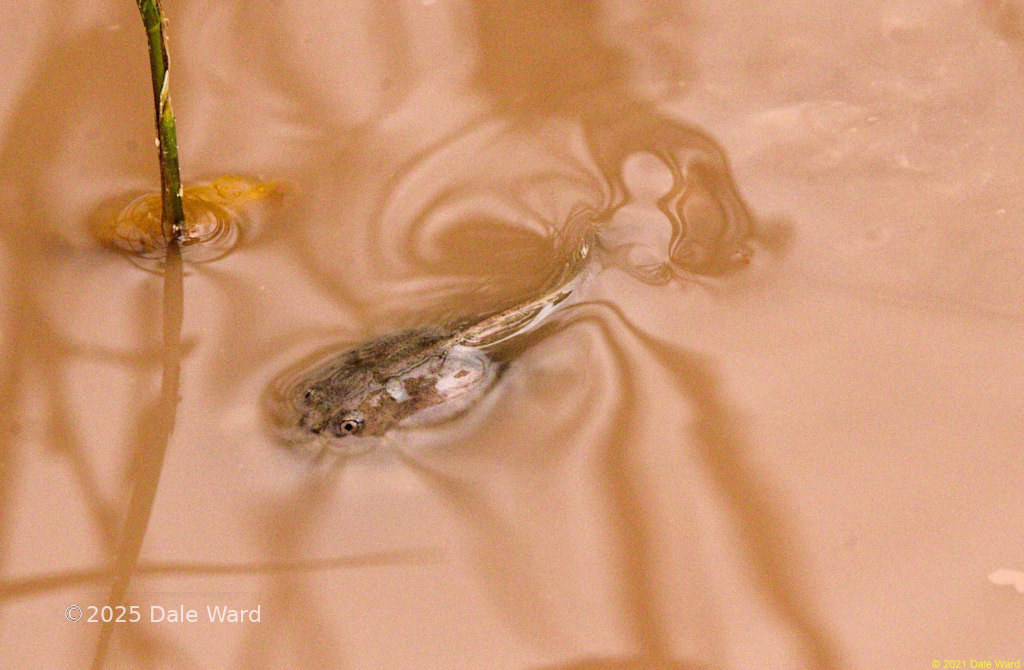 Mexican Spadefoot Toad tadpole in the shallow water of the pool.
Mexican Spadefoot Toad tadpole in the shallow water of the pool.
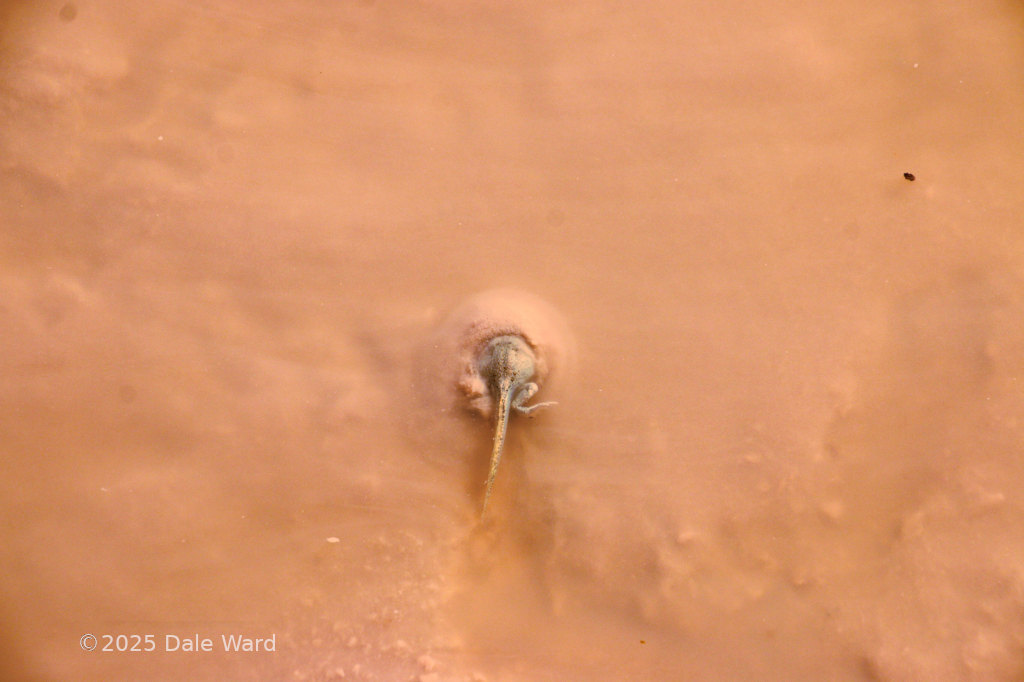 Mexican Spadefoot tadpole with its head buried in the mud. You can see one of its developing hind limbs.
Mexican Spadefoot tadpole with its head buried in the mud. You can see one of its developing hind limbs.
Below is an interesting shot of one of the metamorphs diving away from the surface. You can see a black speck on each heel of the metamorph’s hind legs. Those black specks are the “spades” that are the source of the name “Spadefoot”. The toads will use the spades for digging, once they leave the water.
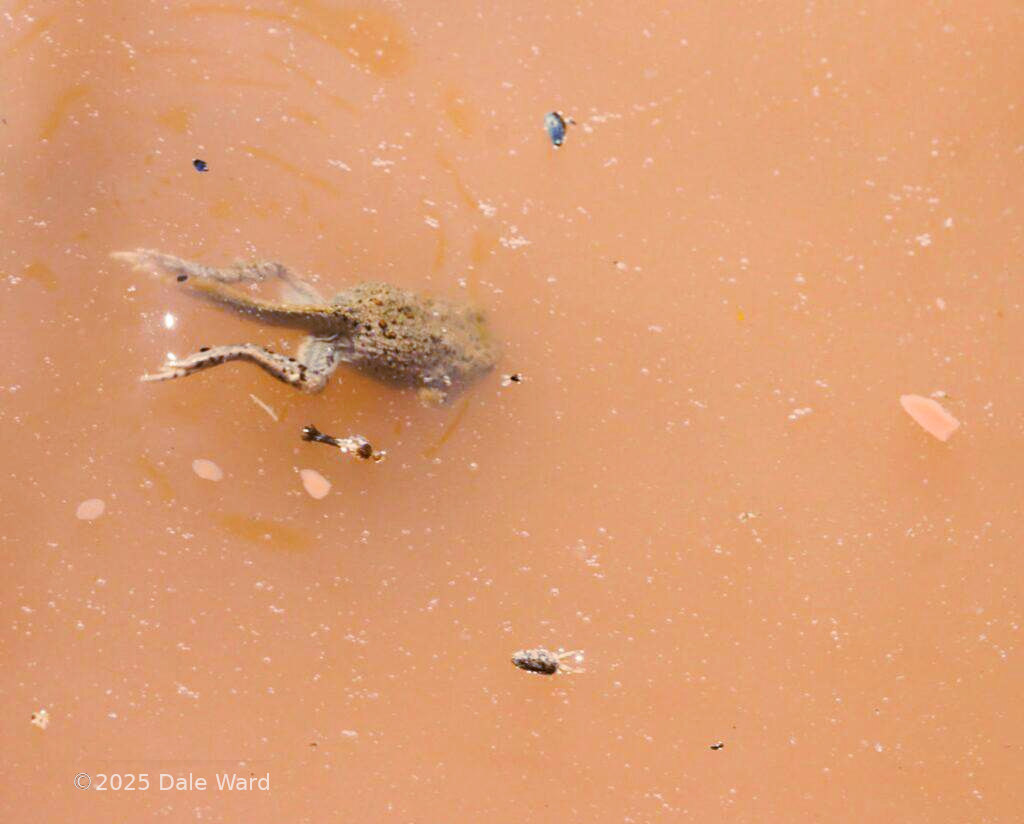 Here’s a shot of a Spadefoot metamorph diving under the surface of the water. Those black specks near the toadlet’s ‘heel’ are the ‘spades’ that give ‘Spadefoot Toads’ their name.
Here’s a shot of a Spadefoot metamorph diving under the surface of the water. Those black specks near the toadlet’s ‘heel’ are the ‘spades’ that give ‘Spadefoot Toads’ their name.
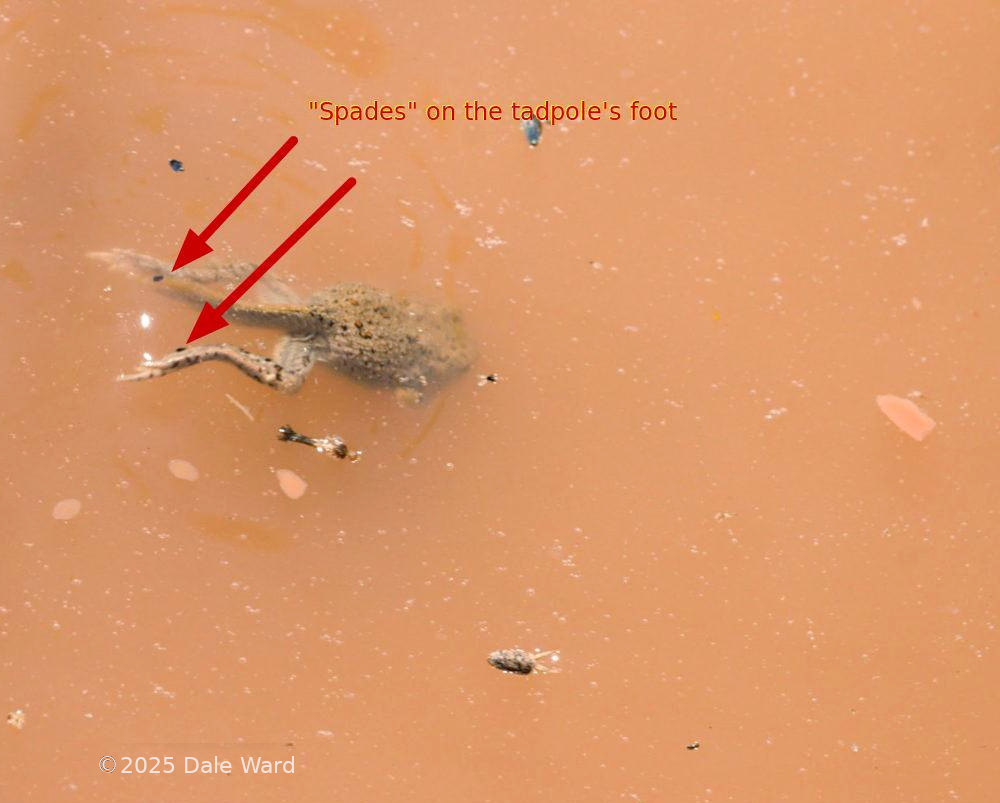 This is the same image as in the previous photo, but I’ve drawn red arrows to the toadlet’s “spades”.
This is the same image as in the previous photo, but I’ve drawn red arrows to the toadlet’s “spades”.
There were a few metamorphs - very young toads - present.
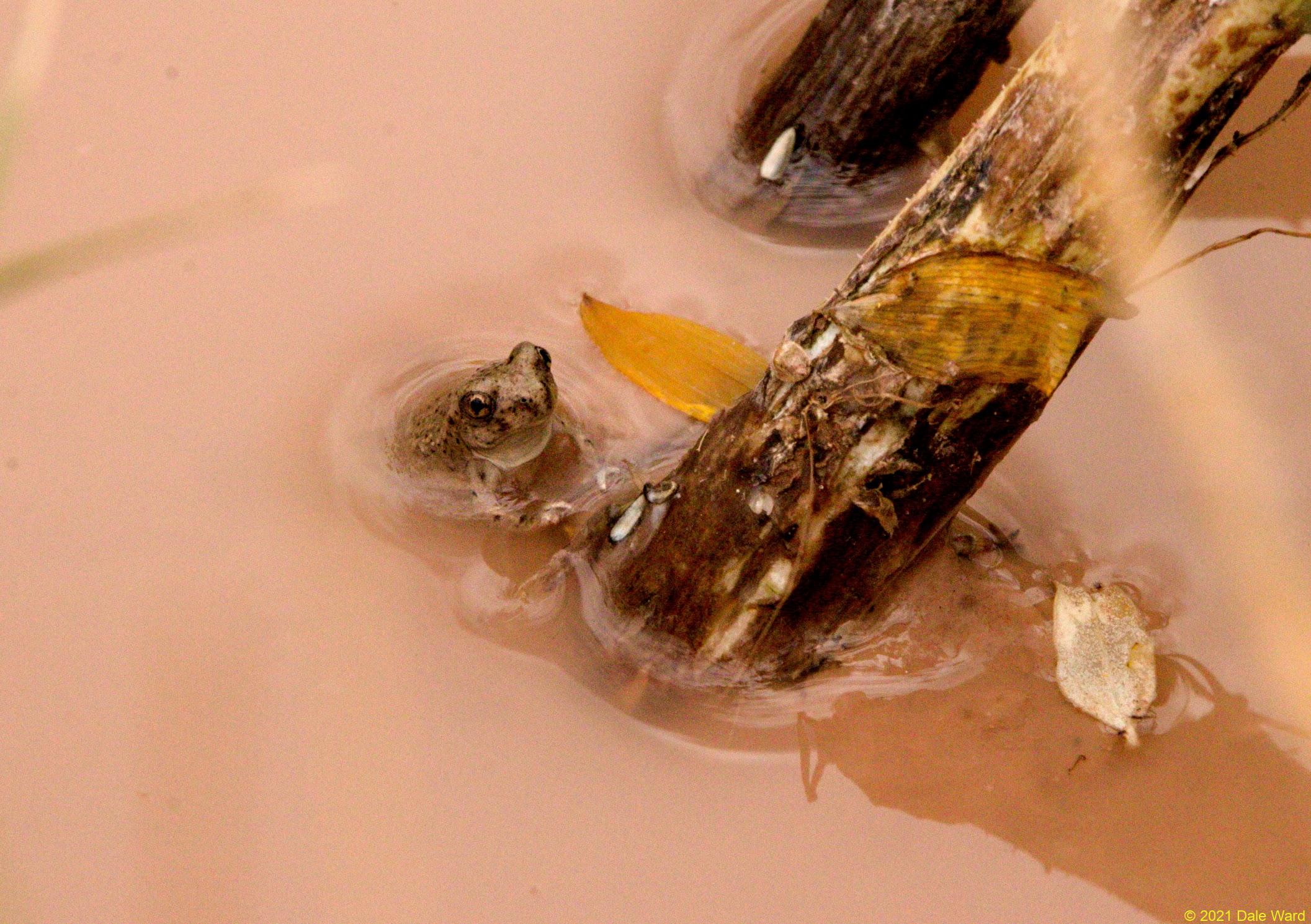 Newly morphed Mexican Spadefoot Toad next to a Sunflower stalk.
Newly morphed Mexican Spadefoot Toad next to a Sunflower stalk.
It was getting difficult to tell the water from the mud in some parts of the pool. The mud has the consistency of partially set pudding. Even a creature as light and inconsequential as a newly metamorphosed toad would sink into the goo.
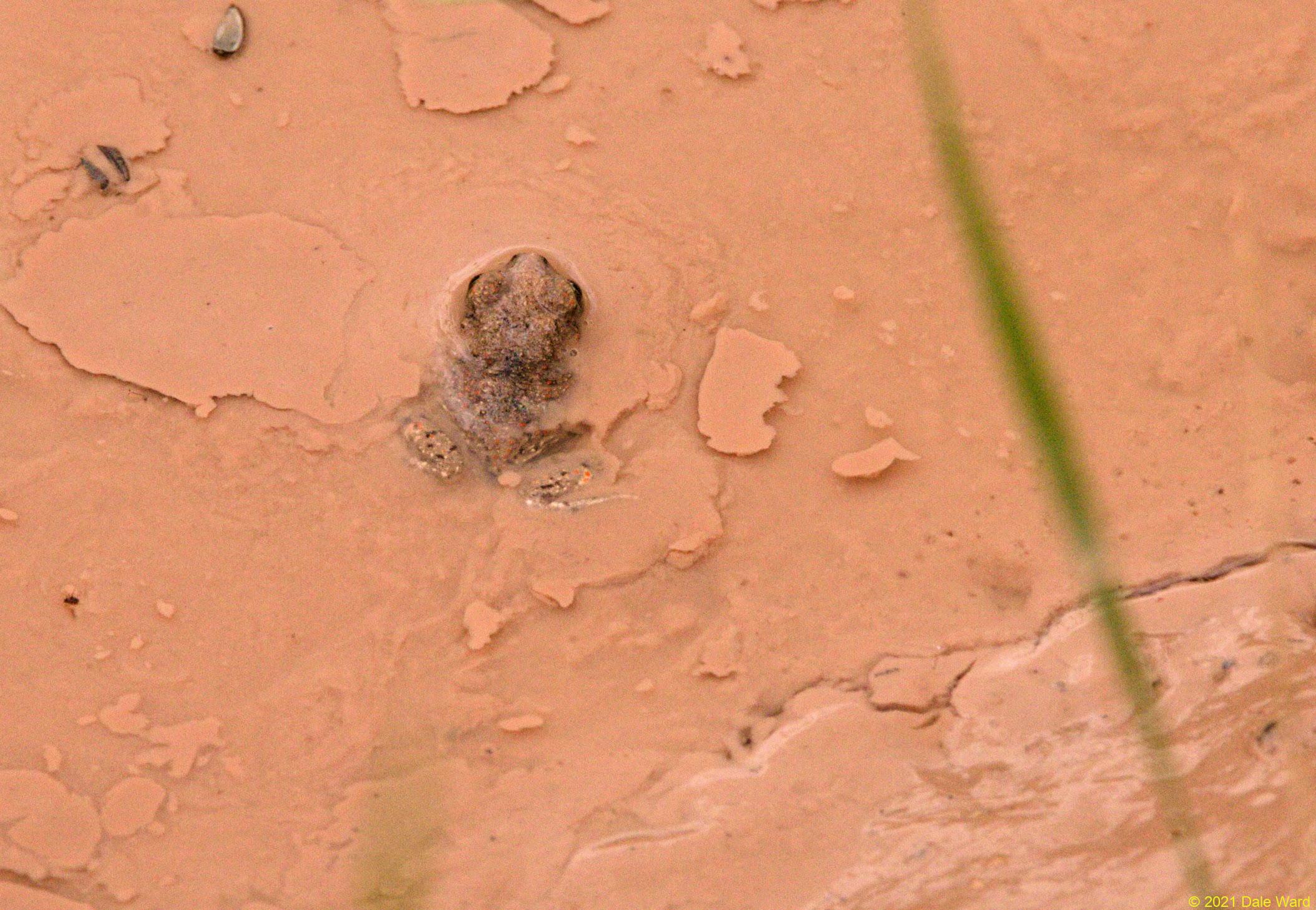 Newly morphed Mexican Spadefoot Toad rests in the muddy shallows of the pool, partially buried in the gelid mud.
Newly morphed Mexican Spadefoot Toad rests in the muddy shallows of the pool, partially buried in the gelid mud.
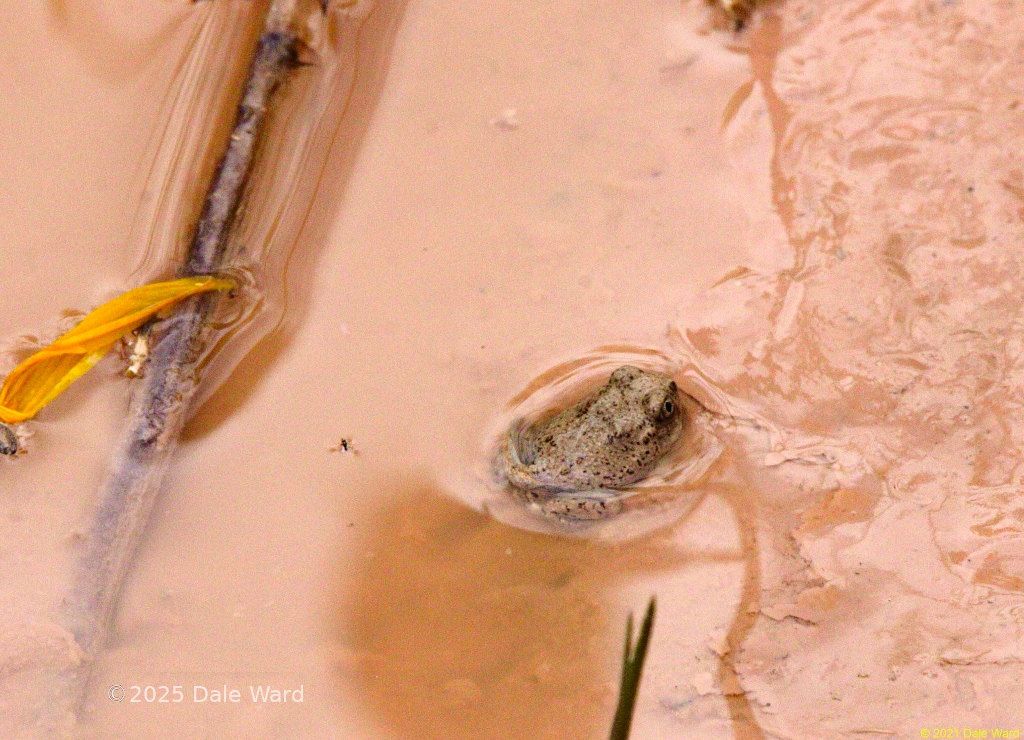 Newly morphed Mexican Spadefoot Toad sits at the edge of the muddy pool.
Newly morphed Mexican Spadefoot Toad sits at the edge of the muddy pool.
I’m really excited to see how this all comes out…if the tadpoles will be able to turn into toads and leave the pool before all of the water evaporates.